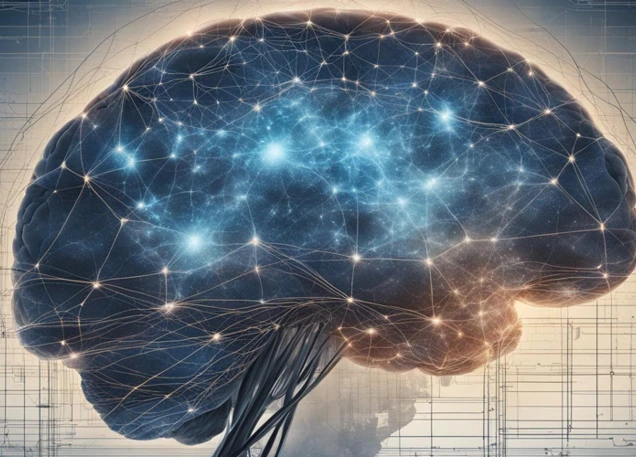Imagine a world where you are aware that you are dreaming and have the power to control the events unfolding before you. This magical phenomenon is known as lucid dreaming. Lucid dreams are a fascinating and perplexing topic that has captivated the human mind for centuries. People have been exploring the science behind lucid dreams in an attempt to understand the mysterious realm of the subconscious. In this article, we will delve into the history, physiology, triggers, benefits, and practical tips of lucid dreaming. Join us on this extraordinary journey as we unlock the secrets of the dream world and unravel the power of the mind.
What is a Lucid Dream?
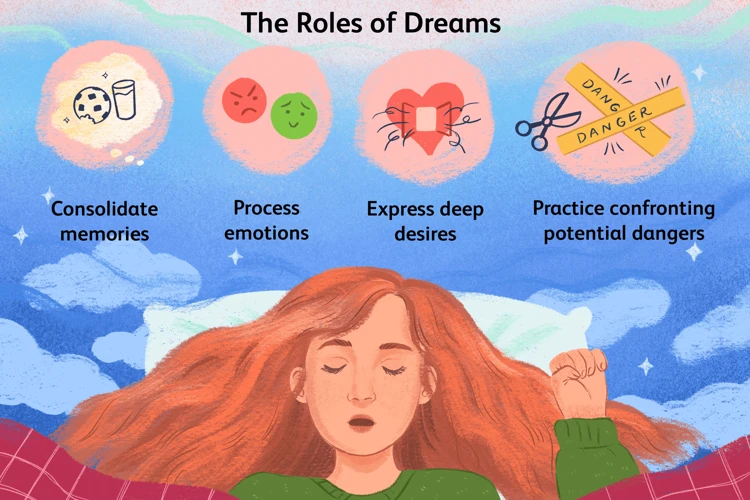
A lucid dream is a type of dream where the dreamer becomes aware that they are dreaming while still in the dream state. Unlike regular dreams where we are passive observers, lucid dreams give us a heightened sense of consciousness and control. In these dreams, we can manipulate the dream environment, interact with dream characters, and even alter the dream narrative to suit our desires. It’s like having a virtual reality experience within our own minds. Lucid dreams can be incredibly vivid and realistic, often indistinguishable from waking life. This unique state of awareness allows us to explore and experience things that may not be possible in the physical world. Lucid dreaming opens up a world of infinite possibilities, where we can unlock our imagination, confront our fears, and tap into our creativity. Lucid dreams can be spontaneous, occurring randomly throughout our lives, or with dedicated practice and techniques, we can learn to induce them at will. To learn more about the benefits of lucid dreaming, visit our article on personal growth through lucid dreaming, or if you’re interested in exploring the link between lucid dreaming and creativity, check out our article on lucid dreaming and creativity. For practical tips and techniques on how to enhance your lucid dreaming experiences, don’t miss our comprehensive guide on lucid dreaming tips and techniques.
History of Lucid Dreaming
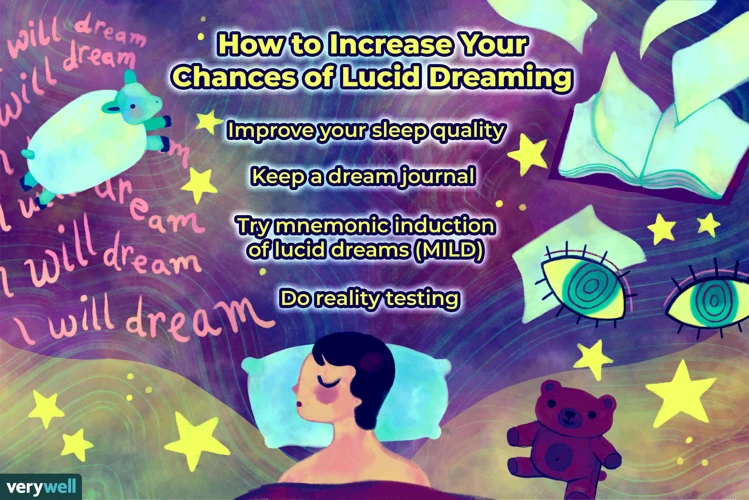
The history of lucid dreaming can be traced back for centuries, with references to this phenomenon found in various cultures and ancient texts. Here is a timeline of significant events in the history of lucid dreaming:
- Ancient Egyptian Dream Practices: In ancient Egypt, dreams were considered to hold great significance and were thought to be a means of communication with the divine. Egyptians believed that lucid dreams provided access to a higher realm of consciousness where they could receive messages and guidance from the gods.
- Aristotle’s Observations: The famous philosopher Aristotle wrote about lucid dreaming in his treatise “On Dreams.” He noted that some individuals were aware that they were dreaming while others were not. Aristotle’s work laid the foundation for the scientific study of dreams.
- Tibetan Dream Yoga: Tibetan Buddhist monks developed the practice of dream yoga, which involved training the mind to maintain awareness during sleep. They believed that lucid dreaming was a gateway to spiritual enlightenment and used various techniques to induce and control lucid dreams.
- Sleep Laboratory Research: In the late 19th and early 20th centuries, the study of sleep and dreams gained scientific attention. Pioneering psychologists such as Wilhelm Wundt and Sigmund Freud explored the nature of dreams and the concept of lucidity within them.
- Stephen LaBerge’s Contribution: In the 1980s, psychologist Steven LaBerge conducted groundbreaking research on lucid dreaming. He developed techniques to induce lucid dreams and established a scientific framework for studying and understanding this phenomenon.
The history of lucid dreaming reflects the enduring fascination humans have had with dreams and the desire to unravel their mysteries. From ancient practices to modern scientific research, the exploration of lucid dreams continues to shed light on the depths of human consciousness and the limitless potential of the dreaming mind.
Physiological Basis of Lucid Dreams
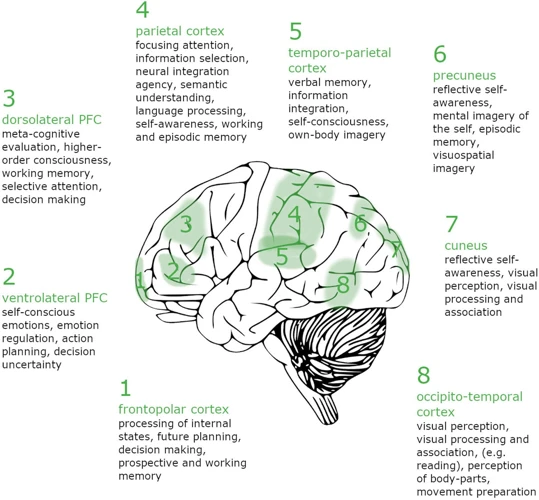
Understanding the physiological basis of lucid dreams involves exploring the inner workings of the brain during the dreaming state. One key factor is the occurrence of Rapid Eye Movement (REM) sleep, a stage of sleep characterized by rapid eye movements, increased brain activity, and vivid dreaming. During REM sleep, our brain waves resemble those of being awake, and the prefrontal cortex, responsible for logical reasoning and self-awareness, shows heightened activity. This combination of brain activity and increased prefrontal cortex functioning creates a fertile ground for lucid dreams to take place. The prefrontal cortex allows us to question reality, recognize inconsistencies, and gain self-awareness within the dream. This unique physiological state provides an explanation for the vividness and the ability to exert control in lucid dreams. Additionally, other physiological factors such as neurotransmitters and neural networks play a role in the formation and experience of lucid dreams, although further research is needed to fully understand the intricacies of this fascinating phenomenon.
REM Sleep
REM sleep stands for Rapid Eye Movement sleep, and it is a stage of sleep characterized by quick and random eye movements, increased brain activity, and vivid dreaming. During REM sleep, our brain becomes highly active, resembling the waking state. This stage is crucial for the occurrence of lucid dreams. It is during REM sleep that our brain releases chemicals like acetylcholine, which play a vital role in supporting conscious awareness and lucidity in dreams. Typically, REM sleep occurs in cycles throughout the night, with each cycle lasting around 90 to 120 minutes. Multiple stages of non-REM sleep precede REM sleep, with each subsequent REM stage becoming longer. This sleep pattern is known as the sleep architecture. It is important to note that while lucid dreams most commonly occur during REM sleep, they can also occur during non-REM sleep, known as lucid dreaming in non-REM sleep. During these non-REM lucid dreams, the content and experience may differ from traditional REM lucid dreams. Understanding the role of REM sleep in lucid dreaming helps us recognize the optimal periods during sleep for inducing and experiencing lucid dreams.
The Role of the Prefrontal Cortex
The prefrontal cortex plays a crucial role in the experience of lucid dreams. This region of the brain, located in the frontal lobe, is responsible for higher cognitive functions such as decision-making, self-awareness, and working memory. During normal dreaming, the prefrontal cortex is significantly less active, leading to the lack of self-awareness and critical thinking that characterizes non-lucid dreams. However, in lucid dreams, the prefrontal cortex becomes more active, allowing the dreamer to maintain a sense of awareness and exercise control over their dream world.
Research suggests that the level of prefrontal cortex activation during lucid dreaming is similar to that during wakefulness. This heightened activity allows for the monitoring and evaluation of the dream state, enabling the dreamer to recognize the surreal nature of the dream environment and potentially trigger lucidity. It is believed that this increased activation in the prefrontal cortex is responsible for the cognitive abilities exhibited during lucid dreams, such as logical reasoning, decision-making, and intentional actions.
The prefrontal cortex’s involvement in lucid dreaming is further supported by studies using neuroimaging techniques, such as functional magnetic resonance imaging (fMRI). These studies have shown increased blood flow and activity in the prefrontal cortex during lucid dreams compared to non-lucid dreams. Additionally, research has found that individuals who have lesions or damage to the prefrontal cortex experience a reduced frequency of lucid dreams, indicating the importance of this brain region in the phenomenon.
Understanding the role of the prefrontal cortex in lucid dreaming provides valuable insights into the science behind this intriguing phenomenon. It highlights the connection between brain activity and conscious awareness during sleep, shedding light on the mechanisms that enable us to have control over our dreams. The interplay between the prefrontal cortex and other brain regions involved in dreaming continues to be a fascinating area of research, as scientists strive to unravel the complex nature of lucid dreaming.
Triggers and Techniques for Inducing Lucid Dreams
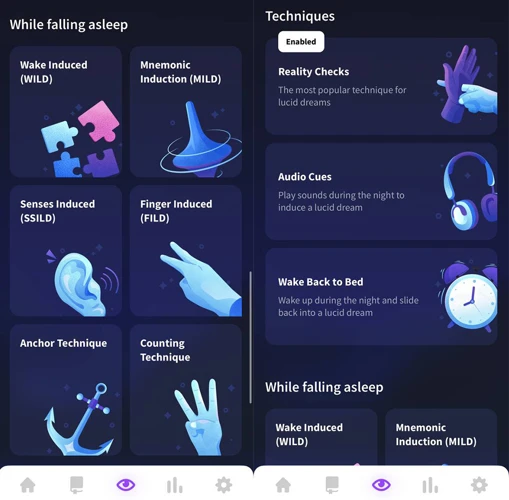
Triggers and techniques play a crucial role in inducing lucid dreams, allowing individuals to enter the realm of conscious dreaming. One such technique is reality testing, which involves performing frequent reality checks throughout the day to establish a habit of questioning one’s wakefulness. Another effective technique is the wake-back-to-bed method, where individuals set an alarm to wake up during the night, stay awake for a short period, and then go back to sleep with the intention of entering a lucid dream. The mnemonic induction of lucid dreams (MILD) technique involves setting intentions before sleep, repeatedly reminding oneself to recognize that they are dreaming when in a dream. Additionally, technology-assisted methods like lucid dreaming masks or apps can be used to boost lucidity by providing cues or stimuli during the dream state. By utilizing these triggers and techniques, individuals can enhance their chances of experiencing lucid dreams and explore the vast possibilities of the dream world.
Reality Testing
Reality testing is a fundamental technique used to induce and enhance lucid dreams. The concept behind reality testing is to develop the habit of questioning one’s reality throughout the waking hours, which then carries over into the dream state. By repeatedly testing the nature of reality in waking life, one is more likely to question their state of consciousness while dreaming. There are several methods of reality testing that can be practiced. One common approach involves regularly asking yourself, “Am I dreaming right now?” and performing a reality check. This can be done by looking at your surroundings and examining the details. In the dream state, the environment may appear distorted or inconsistent, providing a clue that you are dreaming. Another common reality testing technique is attempting to perform physical actions that defy the laws of physics, such as trying to fly or pass through solid objects. If you find yourself able to accomplish these feats, it is a clear indicator that you are in a dream. Additionally, using external cues, like checking the time or reading text, can be effective reality tests. In dreams, texts and numbers often appear blurry or change upon re-reading. Through consistent practice and habituation of reality testing in waking life, individuals are more likely to carry out these checks during their dreams, leading to increased awareness and lucidity.
Wake-Back-to-Bed Technique
The Wake-Back-to-Bed (WBTB) technique is a popular method used to induce lucid dreams. It involves waking up from sleep and then going back to bed with the specific intention of entering a lucid dream. The key idea behind this technique is to take advantage of the sleep cycle and the natural occurrence of REM (Rapid Eye Movement) sleep, which is the stage of sleep most closely associated with dreaming.
Here’s how the Wake-Back-to-Bed technique works:
1. Set an alarm: Before going to bed, set an alarm to wake you up after 4-6 hours of sleep. This timing is crucial because it ensures that you wake up during the REM sleep phase, which is typically longer in the later part of the night.
2. Stay awake for a short period: When your alarm goes off, get out of bed and engage in some quiet and relaxing activities. You can read a book, meditate, or simply sit and reflect. The goal is to stay awake for about 20-60 minutes, allowing yourself to fully wake up before going back to bed.
3. Focus on lucid dreaming: During the period you are awake, keep your mind focused on the intention of having a lucid dream. Visualize yourself becoming aware in your dreams, imagine the scenarios you want to experience, and repeat affirmations like “I will have a lucid dream” or “I am aware in my dreams.”
4. Return to bed: After the designated awake period, go back to bed and make yourself comfortable. As you drift back to sleep, maintain your awareness and hold on to the intention of having a lucid dream. It’s helpful to repeat a mental mantra or affirmation before falling asleep.
The Wake-Back-to-Bed technique capitalizes on the fact that waking up and going back to sleep can increase the likelihood of entering a lucid dream. By interrupting your sleep and re-engaging with your conscious mind, you are better able to recognize the dream state and take control of the dream narrative. This technique is particularly effective because it capitalizes on the natural REM rebound effect that occurs when you go back to sleep after a period of wakefulness.
It’s important to note that consistency and practice are key for successful implementation of the Wake-Back-to-Bed technique. It may take some time to find the optimal timing and balance for your own sleep cycle. Additionally, combining this technique with reality testing and other lucid dream induction methods can enhance your chances of having a lucid dream.
Mnemonic Induction of Lucid Dreams
Mnemonic Induction of Lucid Dreams (MILD) is a technique that aims to induce lucid dreams through the use of memory and intention. This technique was developed by psychologist Stephen LaBerge, who is a prominent figure in the field of lucid dreaming research. The primary focus of MILD is to enhance dream recall and establish a strong intention to become lucid in the dream state. The process involves setting an alarm to wake up after approximately five hours of sleep, which is when REM sleep, the stage where most dreaming occurs, is most prevalent. Upon waking up, the dreamer should recall the dream they had just experienced in as much detail as possible, paying close attention to any recurring dream signs or patterns. While visualizing the dream, the dreamer should repeat a phrase or affirmation, such as “Next time I’m dreaming, I will remember that I’m dreaming.” By combining the act of remembering the dream and setting the intention to be lucid in future dreams, MILD aims to increase the chances of having a lucid dream. This technique can be practiced consistently over time to train the mind to develop the habit of becoming lucid in dreams. Remember, patience and persistence are key when using MILD, as it may take some time and practice to achieve consistent lucidity.
Technology-Assisted Methods
In the world of lucid dreaming, technology has become a valuable ally in assisting dreamers to enter and navigate their dream realms. Technology-assisted methods have revolutionized the way we approach lucid dreaming and have provided new opportunities for exploration and enhancement of this phenomenon. One popular technology-assisted method is the use of lucid dreaming masks. These masks are equipped with sensors that detect rapid eye movement (REM) sleep, which is the stage of sleep most closely associated with dreaming. When the mask detects REM sleep, it utilizes various techniques to signal the dreamer that they are in a dream, such as flashing lights or playing customized sound cues. These cues act as reality checks, prompting the dreamer to question their reality and realize that they are in a lucid dream. Another technology-assisted method is the use of lucid dreaming apps on smartphones or tablets. These apps typically offer features like dream journals, reality check reminders, and even guided meditations or visualizations to induce lucid dreams. Some apps also use techniques like binaural beats or isochronic tones, which are specific sound frequencies believed to influence brainwave activity and facilitate lucid dreaming. Additionally, brainwave entrainment devices such as EEG headsets or audio devices can monitor and influence brainwave patterns to increase the likelihood of lucid dreaming. These devices use specific frequencies or patterns of sound or light to synchronize brainwaves and promote a state of heightened awareness during sleep. Technology-assisted methods can be powerful tools for beginners and experienced lucid dreamers alike, providing an extra boost to the process of attaining and maintaining lucidity within dreams. However, it is important to note that while technology can be helpful, it should not be relied upon as the sole method for lucid dream induction. It is still crucial to practice other techniques such as reality testing and mindfulness to develop a well-rounded approach to lucid dreaming.
Benefits and Applications of Lucid Dreaming
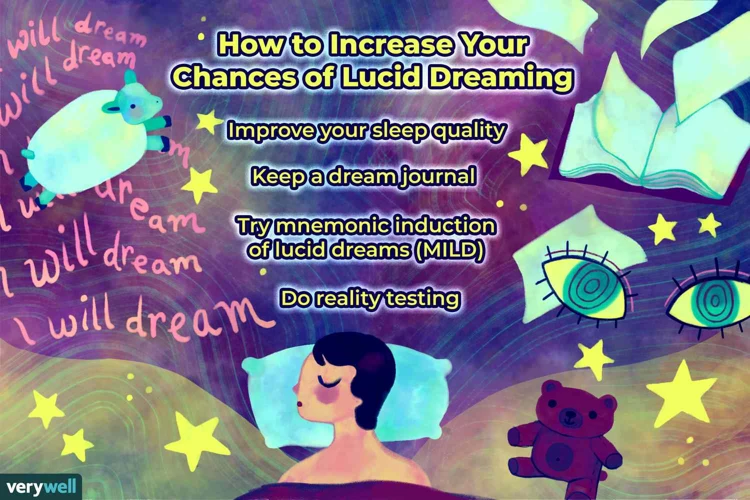
Lucid dreaming offers a multitude of benefits and applications that can positively impact various aspects of our lives. Firstly, it serves as a powerful tool for personal development. By engaging in lucid dreams, individuals can confront fears, practice skills, and overcome challenges in a safe and controlled environment. It also provides a unique opportunity for self-exploration and self-reflection. Additionally, lucid dreaming has shown promise in helping individuals cope with nightmares and PTSD. Through lucid dreaming, people can actively change the course of their dreams, turning them into more positive and empowering experiences. Lucid dreaming can be a source of creative inspiration, unlocking the imagination and allowing for the exploration of limitless ideas and scenarios. Lastly, there is growing interest in the therapeutic potential of lucid dreaming, particularly in the field of psychotherapy. It has been used to address issues such as recurring nightmares, anxiety, and trauma. The applications of lucid dreaming are diverse, offering a unique and powerful means of personal growth, healing, and creative exploration.
Personal Development
Personal development is one of the key benefits of lucid dreaming. Lucid dreams provide a unique opportunity for self-reflection, exploration, and growth. In a lucid dream, we have the ability to confront our fears, challenge our limitations, and push ourselves beyond our comfort zones. It allows us to tap into our subconscious mind and gain insights into our thoughts, emotions, and behaviors. Through lucid dreaming, we can explore unresolved issues, work through traumas, and gain a deeper understanding of ourselves. Lucid dreams can also be used as a platform for practicing skills and improving performance. Athletes, musicians, and artists often utilize lucid dreaming to rehearse their performances, enhance their technique, and boost their confidence in waking life. Additionally, lucid dreaming can be a powerful tool for setting and achieving goals. By visualizing and practicing specific actions and scenarios in our lucid dreams, we can reinforce positive behaviors and increase our chances of success in the real world. The personal development potential of lucid dreaming is vast, offering a unique and introspective journey of self-discovery and growth.
Nightmares and PTSD
Nightmares can be terrifying experiences that leave us feeling helpless and afraid. However, lucid dreaming offers an intriguing potential solution for individuals who suffer from recurring nightmares or post-traumatic stress disorder (PTSD). By becoming lucid within a nightmare, individuals can gain control over the situation and transform the terrifying scenario into something more positive. The ability to confront and overcome their fears within the safety of a lucid dream environment can be empowering and therapeutic. Lucid dreaming allows individuals to actively engage with their nightmares, helping them process and reduce the emotional intensity associated with traumatic experiences. Research has shown that by practicing lucid dreaming techniques, individuals with PTSD have reported a decrease in nightmare frequency and intensity, as well as an improvement in overall sleep quality. It is important to note that while lucid dreaming shows promise as a potential therapeutic tool, it should be used in conjunction with professional guidance and support for individuals dealing with severe trauma.
Creative Inspiration
Creative inspiration is one of the remarkable benefits of lucid dreaming. When we are in a lucid dream, our minds are free to explore and create without any limitations. In this altered state of consciousness, we can tap into the depths of our imagination and unleash a flood of innovative ideas. Lucid dreaming provides a unique platform for artists, writers, musicians, and creators of all kinds to experience a vast array of sensory and emotional landscapes that can fuel their creative endeavors. The ability to directly engage with the dream environment and characters allows for dynamic storytelling and the development of rich narratives. Lucid dreams offer opportunities to experiment with different artistic styles, explore new concepts, and push the boundaries of creativity. Some individuals have even reported gaining insight into unresolved artistic problems or discovering new techniques and perspectives through their lucid dreams. The surreal and abstract nature of the dream world can inspire fresh ideas and help break through creative blocks. With practice and intention, lucid dreaming can become a valuable tool for those seeking inspiration and wanting to delve into the realm of boundless imagination.
Therapeutic Potential
The therapeutic potential of lucid dreaming has gained attention in recent years, as researchers and psychologists explore its applications in mental health and well-being. Lucid dreaming offers a unique opportunity for introspection and self-exploration, allowing individuals to confront and overcome their fears, traumas, and anxieties within the safe confines of their dreams. One therapeutic application of lucid dreaming is called “dream therapy,” where individuals can recreate and modify distressing dream scenarios to find resolution and healing. Through lucid dreaming, people can confront their nightmares, work through emotional trauma, and develop a sense of empowerment and control over their subconscious mind. Lucid dreaming has also shown promise in treating conditions such as post-traumatic stress disorder (PTSD) by helping individuals process and reframe traumatic experiences. It provides a safe and controlled environment for reliving and assimilating difficult memories, ultimately leading to emotional healing. Additionally, lucid dreaming has been explored as a complement to traditional therapy techniques, as it can provide insights into the unconscious mind and facilitate personal growth and transformation. While the field of therapeutic lucid dreaming is still emerging, initial research and anecdotal evidence indicate its potential as a powerful tool for psychological well-being and healing.
Lucid Dreams in Popular Culture

Throughout popular culture, lucid dreams have made their mark in various forms of media, captivating audiences and sparking curiosity. From books to movies to music, the concept of lucid dreaming has been explored and portrayed in different ways. In films like “Inception” and “The Matrix,” the idea of manipulating dreams and entering alternate realities has mesmerized viewers. These movies blur the lines between dreams and reality, leaving audiences questioning the nature of their own existence. In literature, authors like Charles Dickens and Lewis Carroll have delved into the realm of lucid dreams, incorporating them into their stories to create whimsical and surreal worlds. Musicians, too, have been influenced by lucid dreaming, with artists like The Beatles and Pink Floyd weaving dreamlike themes into their lyrics and album artwork. Lucid dreaming has become a source of inspiration for creators to explore the depths of the subconscious mind and challenge the boundaries of reality. As lucid dreams continue to capture the imagination of the masses, it’s evident that their influence in popular culture will only grow stronger.
Research and Studies on Lucid Dreaming

The field of research and studies on lucid dreaming has gained significant attention in recent years as scientists and psychologists seek to understand the underlying mechanisms and potential applications of this phenomenon. Numerous studies have been conducted to explore various aspects of lucid dreaming, including its physiological basis, cognitive processes involved, and the potential benefits it offers. For instance, research has shown that lucid dreaming occurs primarily during the REM (rapid eye movement) stage of sleep, which is associated with heightened brain activity and vivid dreams. Studies have also examined the role of the prefrontal cortex, the part of the brain responsible for logical thinking and self-awareness, in the experience of lucid dreaming. Additionally, research has investigated the potential therapeutic applications of lucid dreaming, such as its usefulness in treating nightmares and post-traumatic stress disorder. Researchers have explored the potential creative benefits of lucid dreaming, including its role in problem-solving and artistic inspiration. These studies have provided valuable insights into the nature and potential applications of lucid dreaming, contributing to our understanding of this fascinating phenomenon.
Practical Tips for Enhancing Lucid Dreaming
Enhancing lucid dreaming experiences can be an exciting and rewarding journey. Here are some practical tips to help you maximize your chances of having lucid dreams:
1. Keep a Dream Journal: Start by keeping a dream journal by your bedside. As soon as you wake up, jot down the details of your dream, including any recurring themes or symbols. This practice helps improve dream recall and trains your brain to pay more attention to your dreams.
2. Reality Testing: Perform reality checks throughout the day. Ask yourself, “Am I dreaming?” and test the reality of your surroundings. This habit will eventually carry over into your dreams, leading to increased chances of becoming lucid. Some common reality checks include counting your fingers, trying to push your hand through a solid object, or checking the time twice to see if it changes.
3. Set Intention Before Sleep: Prior to going to bed, set a clear intention to have a lucid dream. Repeat affirmations to yourself such as “I will have a lucid dream tonight” or visualize yourself becoming aware in your dreams. This intention-setting primes your mind for lucidity during sleep.
4. Wake-Back-to-Bed Technique: Set an alarm for around 4-6 hours after falling asleep. When the alarm goes off, wake up for a short period, engage in a relaxing activity like reading or meditating, then go back to sleep with the intention of having a lucid dream. This technique takes advantage of the REM rebound effect and increases the likelihood of entering a lucid dream.
5. Mnemonic Induction of Lucid Dreams (MILD): Before falling asleep, repeat a phrase or mantra to yourself such as “Next time I’m dreaming, I will remember I’m dreaming.” By priming your mind with this intention, you increase your chances of becoming lucid during a dream.
6. Reality Testing in Dreams: Once you are in a dream, perform reality checks to confirm whether you are dreaming or not. This can include attempting to read a passage of text, examining your surroundings closely, or trying to breathe through a pinched nose. If any of these reality checks fail, you will realize that you are in a dream and become lucid.
7. Utilize Technology: Explore technology-assisted methods such as lucid dreaming apps or devices that use light or sound cues to prompt lucidity. These tools can help enhance your lucid dreaming practice by providing additional cues and reminders during sleep.
Remember, enhancing lucid dreaming skills takes practice and patience. Experiment with different techniques, keep a consistent sleep schedule, and remain persistent. With time and dedication, you can unlock the full potential of lucid dreaming and embark on incredible dream adventures. Sweet dreams!
Conclusion
In conclusion, lucid dreaming is a fascinating phenomenon that offers a unique window into the depths of our subconscious minds. Through the exploration of lucid dreams, we can tap into our creative potential, confront fears, and gain personal insights. The physiological basis of lucid dreaming, such as the role of REM sleep and the prefrontal cortex, helps us understand the science behind this extraordinary experience. The various triggers and techniques for inducing lucid dreams provide us with practical tools to enhance our dream awareness. Additionally, the benefits and applications of lucid dreaming, ranging from personal development to therapeutic potential, showcase the immense value of exploring this realm of consciousness. As lucid dreams continue to captivate our imagination and intrigue researchers, it is clear that the boundless possibilities within the dream world are ripe for further exploration and study. So, whether you are a seasoned lucid dreamer or just starting on this journey, seize the opportunity to unlock the extraordinary potential that lies within your own dreams. Embrace the adventure, harness the power of your mind, and let the journey into the world of lucid dreams be your guide.
Frequently Asked Questions
What is the difference between a regular dream and a lucid dream?
In a regular dream, we are unaware that we are dreaming and have no control over the dream events. In contrast, a lucid dream is when the dreamer becomes aware that they are dreaming and can actively participate in and manipulate the dream.
Can anyone learn to have lucid dreams?
Yes, anyone can learn to have lucid dreams with practice and patience. It may come more easily to some individuals, but with the right techniques and dedication, most people can experience lucid dreaming.
Are lucid dreams realistic?
Yes, lucid dreams can be incredibly realistic. The dream environment can be as vivid and tangible as real life, with the ability to engage all the senses.
Are there any potential dangers or side effects of lucid dreaming?
Lucid dreaming is generally considered safe and has no inherent dangers. However, it may disrupt sleep patterns and cause some individuals to experience difficulty with differentiating between dreams and reality upon waking.
Can lucid dreams be used for therapeutic purposes?
Yes, lucid dreaming has shown potential for therapeutic purposes. It can be used to confront and overcome fears, work through traumatic experiences, and explore the subconscious mind.
Can lucid dreaming improve creativity?
Yes, lucid dreaming has been linked to enhanced creativity. It allows individuals to tap into their imagination, explore new ideas, and receive inspiration from within the dream world.
How long do lucid dreams typically last?
The duration of a lucid dream can vary significantly. Some may only last a few minutes, while others can feel like hours or even longer.
Are there any techniques to induce lucid dreaming?
Yes, there are various techniques that can help induce lucid dreaming, such as reality testing, the wake-back-to-bed technique, mnemonic induction of lucid dreams (MILD), and technology-assisted methods like using lucid dreaming masks or apps.
Can lucid dreaming improve sleep quality?
Lucid dreaming itself may not directly improve sleep quality, but it can provide a sense of excitement and exploration within the dream state, which can positively impact an individual’s overall sleep experience.
What should I do if I experience sleep paralysis during a lucid dream?
If you experience sleep paralysis during a lucid dream, try to remain calm and remember that it is a natural phenomenon. Focus on moving your fingers or toes, as this can help break the paralysis and transition back into the dream or fully wake up.

